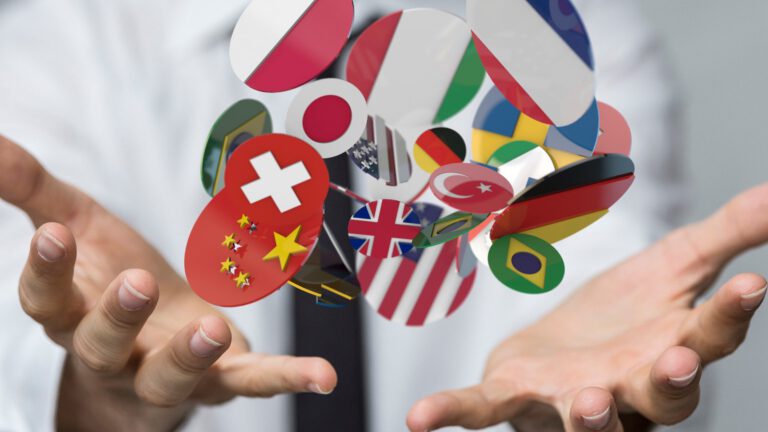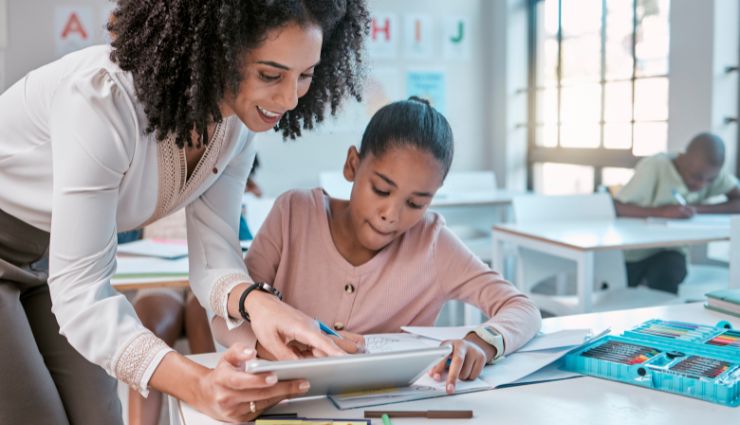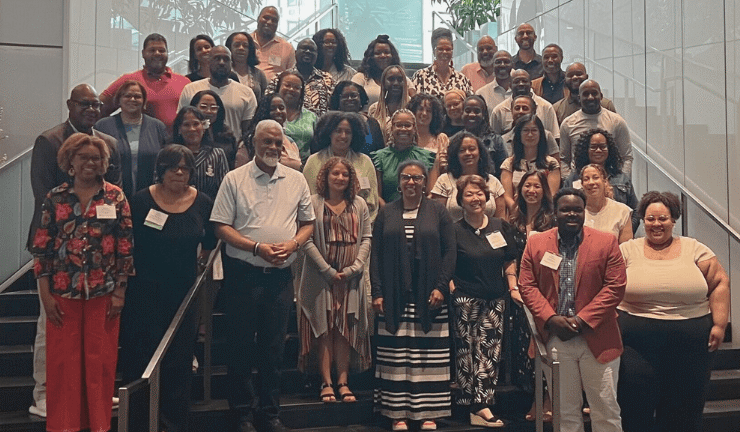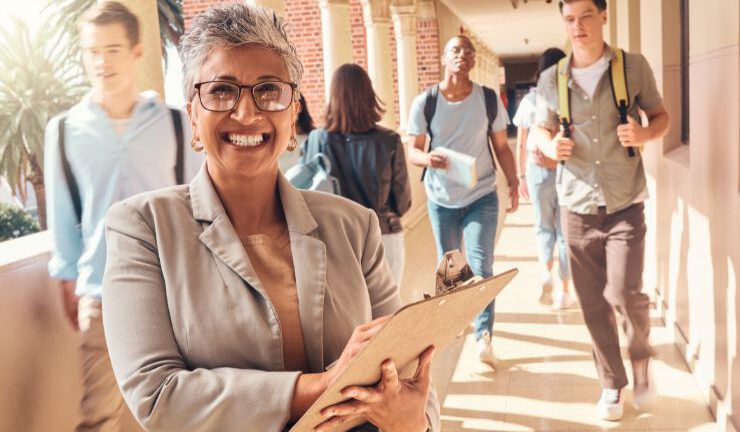Six Revelations from Running Schools During the Pandemic Lockdown

Many of us in education recall reading Carol Dweck’s “Mindset” back in 2006. Her research validated what most educators understood intuitively: the power of the growth mindset. Yet, when Dweck described children who relished challenge, persisted through difficulty, and embraced ambiguity, many of us also couldn’t help but interrogate ourselves. How well did we embrace and practice the growth mindset we worked so hard to foster in our students?
Checking in with school leaders over the past few weeks, I hear echoes of Dweck as educators manage unprecedented disruptions and uncertainties. I asked heads of school and key administrators to share their thoughts on potential silver linings among the many challenges of running schools during the COVID-19 pandemic. As I listened for common themes, I heard many examples of creativity, courage, and persistence, and generosity.
Growth mindset, indeed.
Nimbleness and Adaptability
Across the board, school leaders expressed a revitalized appreciation for adult creativity and adaptability. Teachers pivoted to a brand-new learning environment delivered through platforms they had to master quickly. Most had to pivot again when the first waves of feedback made clear that replicating the brick-and-mortar schedule wasn’t working well. Teachers reframed lessons and modified assessments in a matter of days with renewed focus on the best learning outcomes for students. Some of the teachers who had most resisted change prior to COVID-19 acknowledged that pandemic constraints forced them to rethink their insistence on the sanctity of schedule, content, or assessment methods of the past. The starkness of the student learning experience unmediated by the routines and rituals of the classroom community highlighted questions about big topics like breadth versus depth, authentic assessment, and differentiation.
Adults are sharing their vulnerabilities as learners, telling stories about lessons gone awry and what they gleaned from failures. School leaders tell me they hope to hold onto this thread of adult learning and weave it into the post-COVID-19 culture of their schools. Steve Morris, Head of The San Francisco School, summoned the image of an Olympic high-diving platform to describe teacher adaptability. Pre-COVID-19, some teachers may have climbed the ladder to the diving platform, crept to the edge, peered down, and declared that they saw no reason to jump. Under current circumstances, his entire team had no choice. They needed to muster the courage to step off the platform. Some landed more awkwardly than others, but everyone jumped, and the school community was there with lifejackets, floaties, and a team of lifeguards.
Spotlight on Equity
The shared school environment supports the illusion of a level playing field, where all children have the same tools and resources to achieve their full potential. On-site access to mental health and learning support, nutritious snacks and lunches, and safe spaces to think, read, or exercise mask inequities. Distance learning has pulled back the curtain and revealed stark differences among the resources available to students at home. Meera Ratnesar, Head of Curtis School in Los Angeles, described how distance learning has given her team a more nuanced understanding of her students’ very different lived experience outside of school. No two families are experiencing the pandemic in the same way, and schools are thinking creatively about how to provide all of them with the support they need now and into the uncertain future. Phil Gutierrez, Head of Mid-Peninsula High School in Menlo Park, California, pointed to a greater openness in the dialogue about equity and support between families and the school. Schools are proactively reaching out and checking in with students, not waiting for families to ask for help. Gutierrez and his leadership team have called every family to check in. Their outreach inspired several parents to seed a fund that helped the school cover the costs of new computers, broadband access or upgrades, and even improvements to home workspaces for students in need. At the start of the school lockdown, Steve Morris, Head of The San Francisco School, immediately reached out to families he knew were most vulnerable and has continued to be very intentional about keeping the communication channels open.
These deeper levels of empathy about the social determinates that weigh on children and families and the practice of more open communication could result in new or more individualized ways to address the varied needs of students now and in the post-pandemic world.
Some Kids Are Thriving
Every leader shared a story about the upside of distance learning for some students who are challenged by classroom communities and the multiple physical transitions that mark the rhythms of the school day. Ann Sulzer, Middle School Head at Oregon Episcopal School in Portland, described students relieved to have a break from the social drama of middle school and the myriad interactions that school demands. Students who suffer from social anxiety have gained a reprieve. Sue Porter, Head of Orinda Academy in Orinda, California, a school that serves students with a wide range of learning support needs, said she’s watched kids who made all kinds of excuses not to attend school take to distance learning without prodding. This revelation has helped her to discern the difference between school refusal and learning refusal.
In all, these anecdotes raise an important question for the future: Could independent schools, suddenly much more adept at delivering distance learning, offer more hybrid models for students who don’t thrive in the Monday-through-Friday, all-day social aspects of school?
New and Renewed Partnerships
In normal times, while many school leaders want to share ideas and best practices across schools and regions, day-to-day demands often derail these good intentions. Now, collaboration has become an essential lifeline. Ann Sulzer at Oregon Episcopal School points to two partnerships she may not have cultivated under normal circumstances. She reached out to educators in international schools, who were several weeks ahead of U.S. schools in implementing distance learning and who generously shared their successes and setbacks to help their stateside colleagues. Sulzer will look to them again as their schools reopen ahead of U.S. schools and implement new ways of doing school while keeping students and adults safe in the community. Sulzer also set up a weekly call with her counterpart at a competitor school, who understands the particular needs of middle school students; she has found a thought partner and empathetic ear. Scott Hardister, in his first year as Head of the French American International School in Portland, Oregon, calls upon his support networks much more than usual, talking regularly with experienced heads of school. He has also implemented regular calls with the head of another language immersion school in order to talk about the specific challenges to schools with a shared mission. Leading through these challenges as a new head of school has given him renewed appreciation for networks of expertise.
Letting Go and Experimenting with New Approaches
Educators who have advocated for innovations that, in the past, might have been perceived as putting a student’s future learning at risk — such as replacing traditional grades with standards-based measures of progress — now have space to experiment because seemingly immovable structures in the education hierarchy suddenly shifted. The University of California has temporarily suspended the grade requirement for prerequisite courses. For California high schools, this reprieve offers a golden opportunity. Marin Academy in San Rafael, California has been running a non-graded pilot program in its ninth grade World History course. Now educators across the school can shift the focus from grades to competencies in all courses and collect data that could move them more quickly toward the goal of a mastery transcript. At the Branson School in Ross, California, Head of School Chris Mazzola and the faculty have eliminated homework and embedded skills practice in each class meeting, which has reinvigorated their conversations about the relationship between homework and academic rigor. Mazzola sees teachers easing up on the desire to control and allowing more space for personal and artistic expression. Teachers are emphasizing critical thinking, problem solving, and creativity more than content, and they are discussing new outward facing and relevant courses, including an interdisciplinary course on the effects of COVID-19.
The classic “That won’t work” kneejerk response to proposed change has been replaced by “Why not try it?” Teachers and school leaders are recognizing the arbitrariness of certain benchmarks. Letting go of those benchmarks frees up the conversation on improving teaching and learning. Instead of being motivated by a fear of falling behind or the urgency to catch up with peer schools, schools are asking themselves what’s the best product they can deliver right now under current circumstances — and what does all this imply about improvements to the program once schools open up their campuses again.
Community, Community, Community
This crisis has renewed appreciation for the connections that are the hallmark of an independent school education. Deep and authentic relationships form a bedrock of trust that allow learners to flourish. A middle school teacher creates a weekly photo montage on a theme that she shares with her community – including images of her students with their pets or photos of teachers when they were kids. Teachers at various schools are offering mini courses — such as the Branson School’s course on Relativity taught by physics teacher Doug Wick — that parents can take with their children.
The Silver Lining?
“What we do is best done together and face to face,” says Branson’s Chris Mazzola. “We will never be as good online as we are when we’re together.” The experience of missing community — informal hellos and quick check-ins, rituals that create a sense of belonging, the reassurance of being seen and known by caring people — is pervasive. It reinforces the centrality of relationships and connections that define independent schools. Yet schools are finding that they can create more community and connection in this forced experiment in distance learning than they ever imagined. They have also discovered that pressures they are under are driving some valuable conversations about the shape of quality education, now and in the years to come. If there is a silver lining to teaching and learning in a pandemic, it’s this understanding that our schools are in good hands and that an openness to personal and institutional growth — through creativity, courage, and persistence, and generosity — will lead us all to become better, more adaptable schools in service of our missions.
As a partner to schools, we at Carney Sandoe are also reexamining our practices, adjusting to new platforms, and finding new ways to maintain connections to the communities we serve. We’ve organized virtual hiring fairs, hosted webinars on best practices in inclusive hiring, and forged ahead in planning other virtual learning opportunities for our clients. We’re checking in with school leaders and teachers and keeping track of trends that will help us help schools. Like our colleagues in schools, we’re jumping off the high dive. Stella Beale, Dean of Faculty at Marin Academy, speaks for many of us as she describes being heartened by generosity, flexibility, support, camaraderie, and forgiveness amidst challenge: “We’re all beginners now.”
Karen Whitaker, a former Assistant Head of School and Academic Dean, is a Search Consultant for the CS&A’s Key Administrator and Head of School Practices. She has worked on a wide range of searches and particularly enjoys getting to know a school’s culture and aspirations in order to find the right leadership match.








